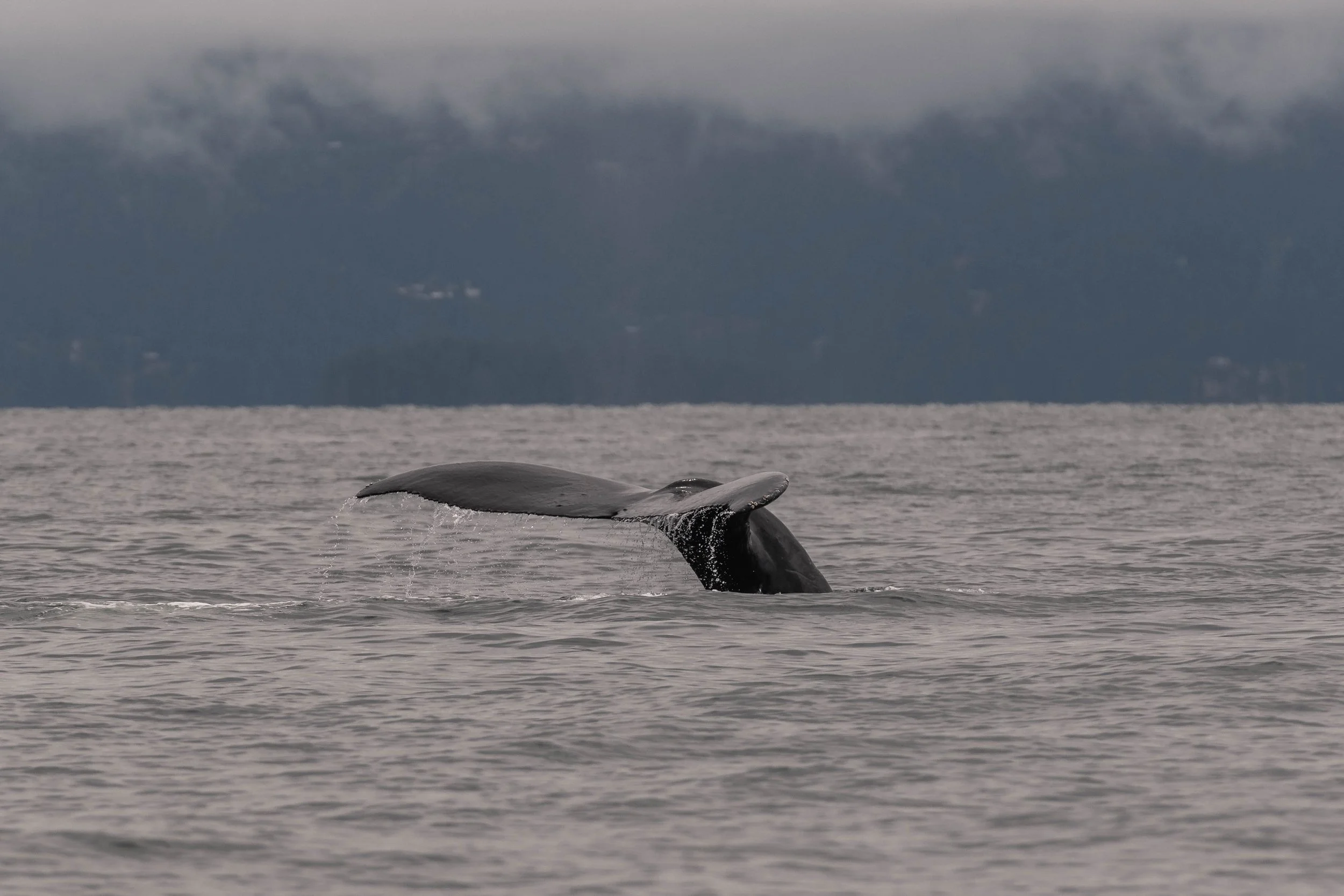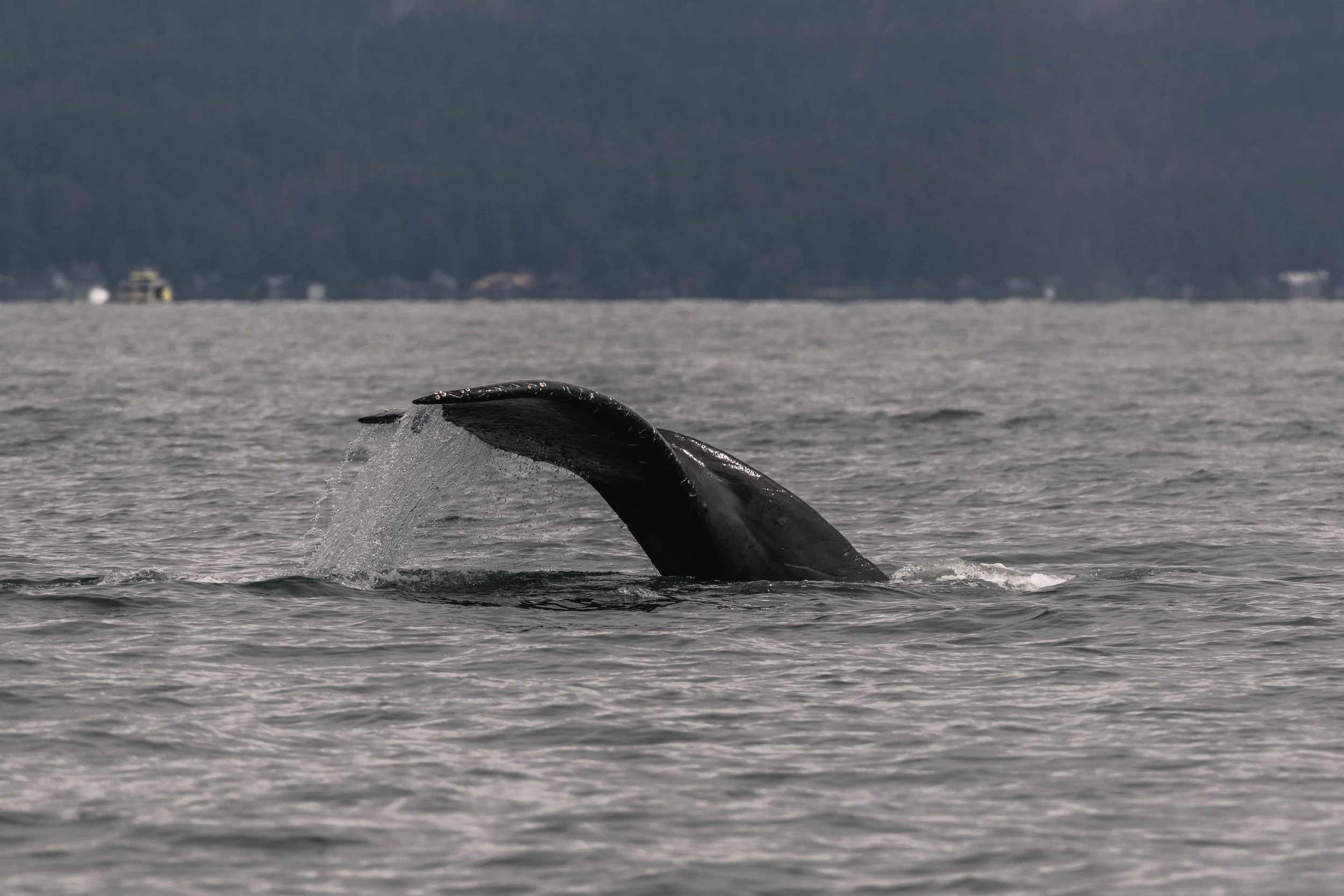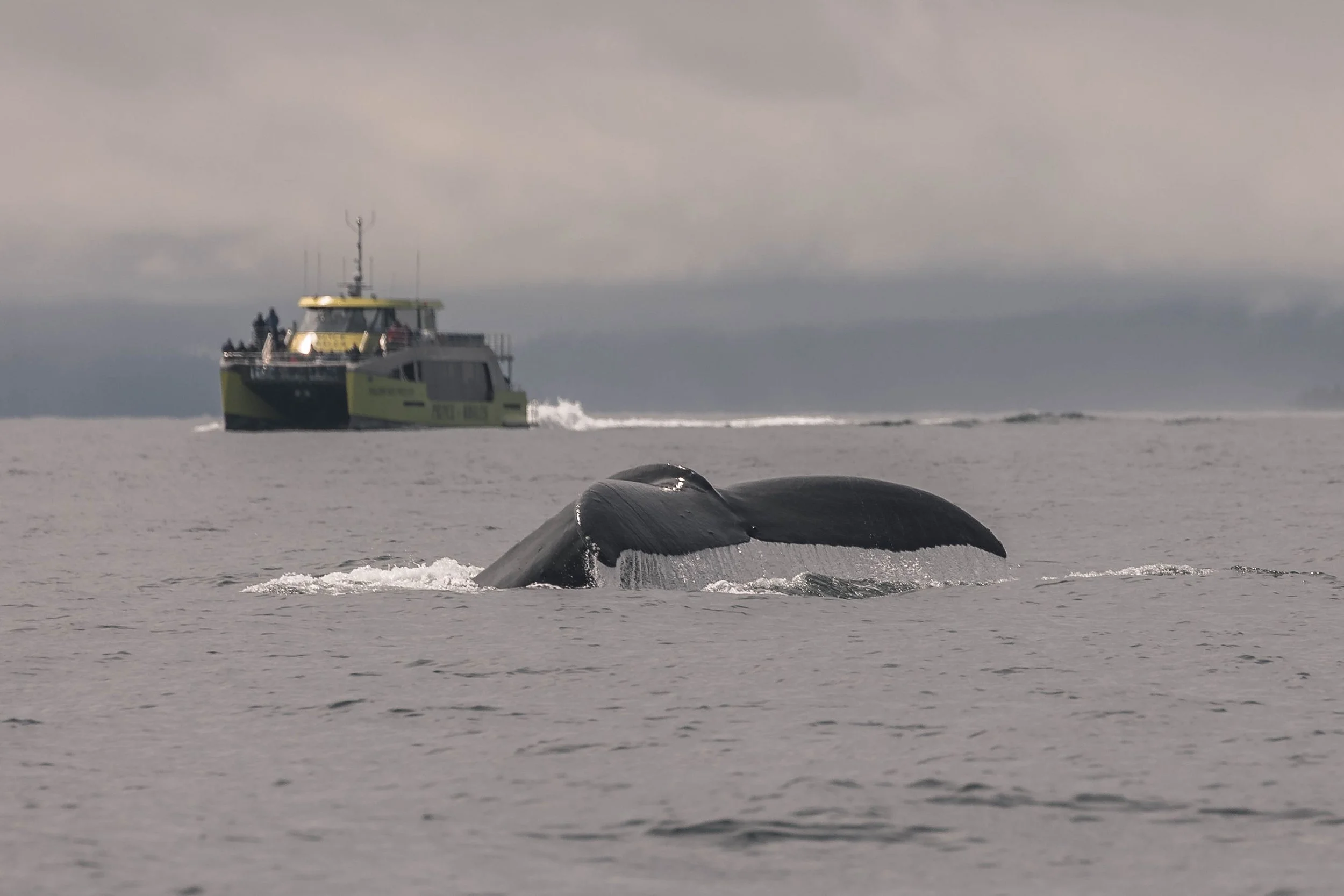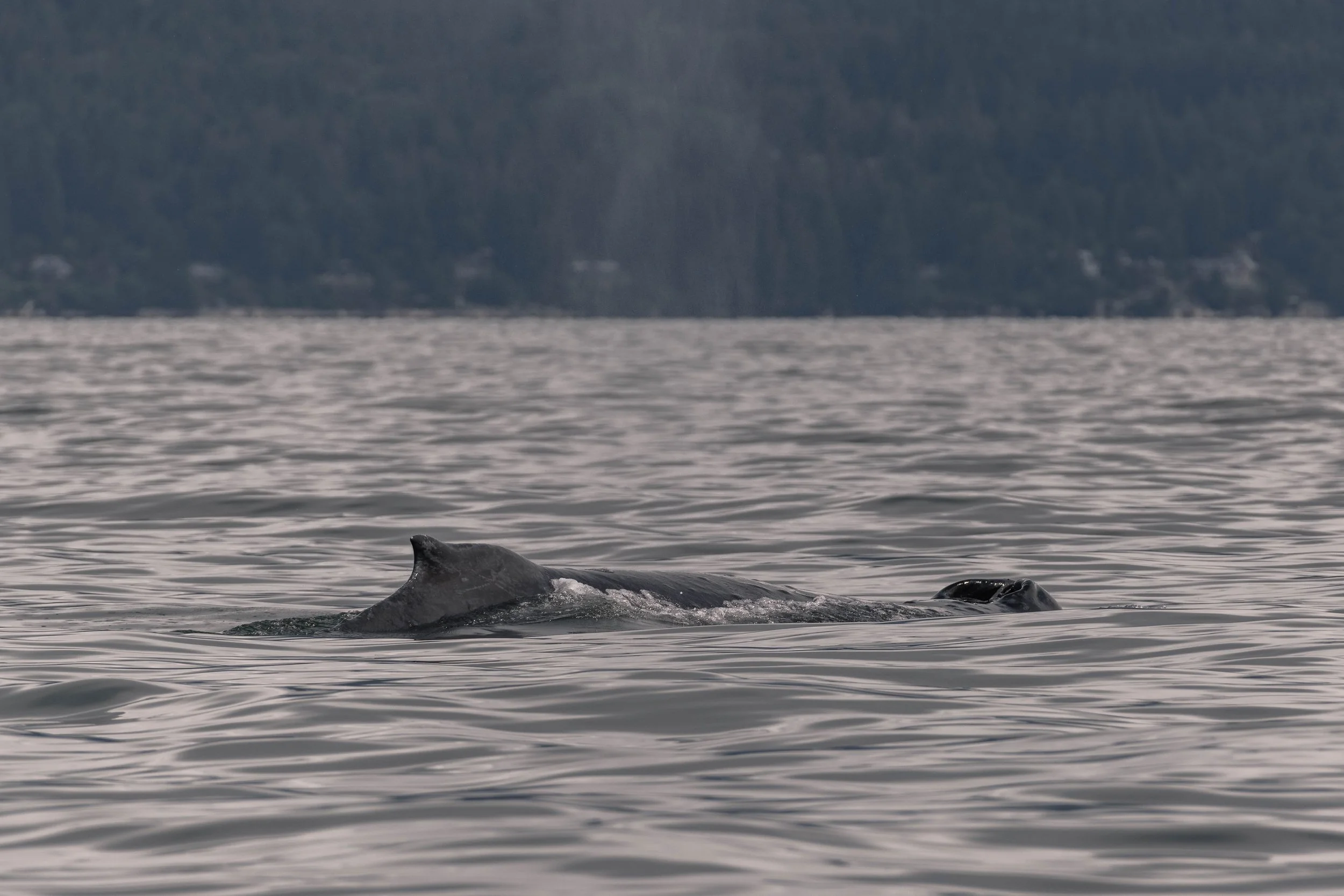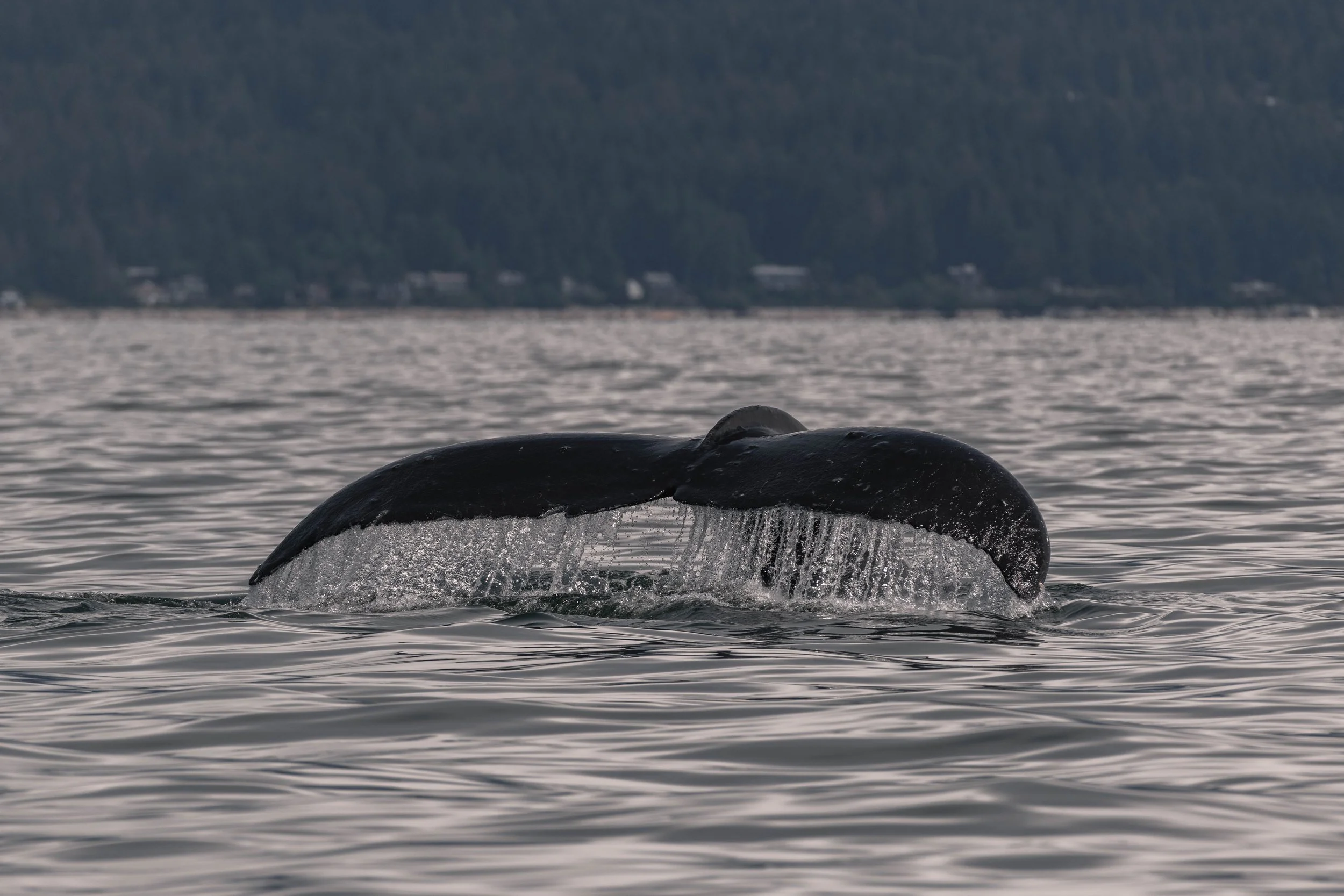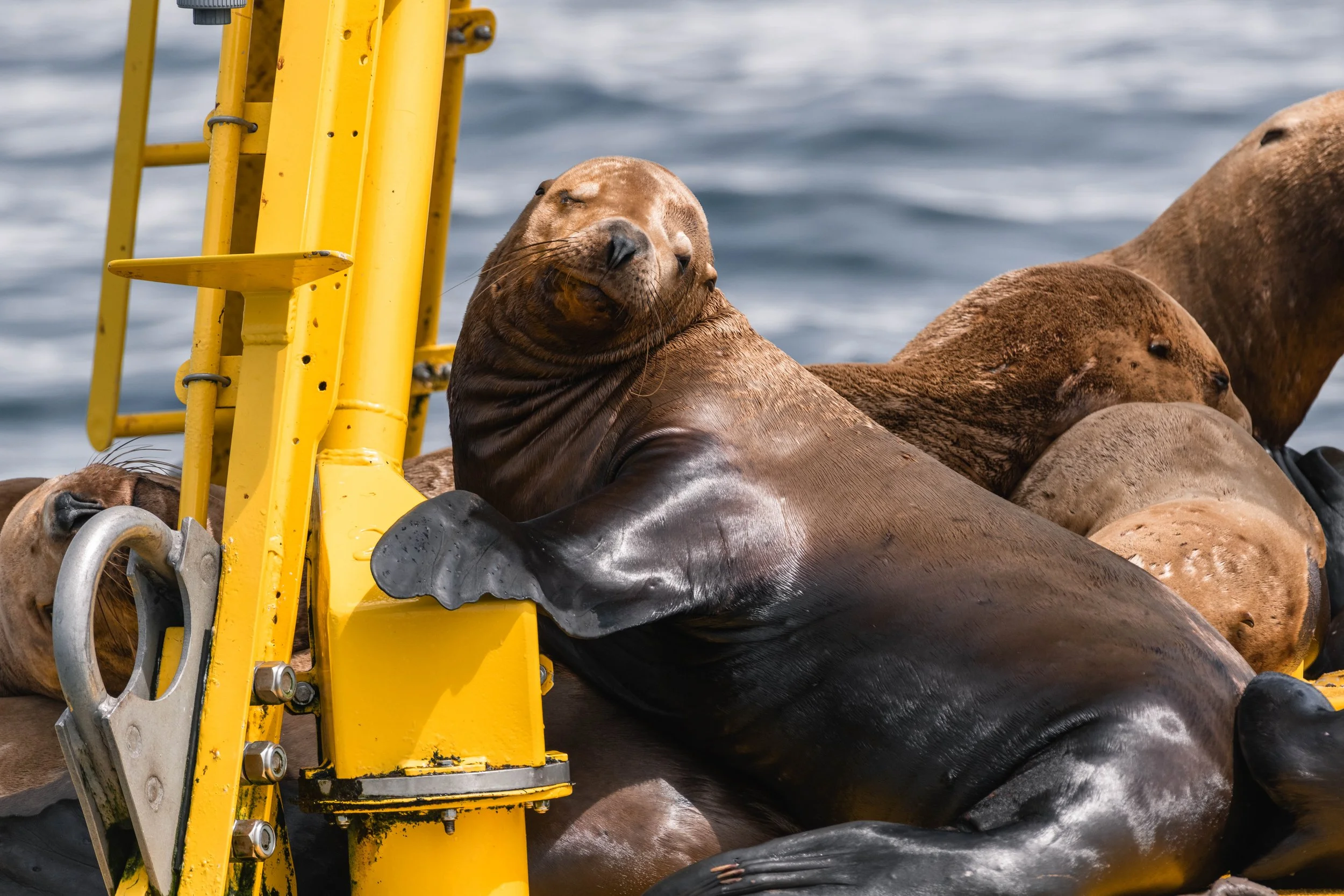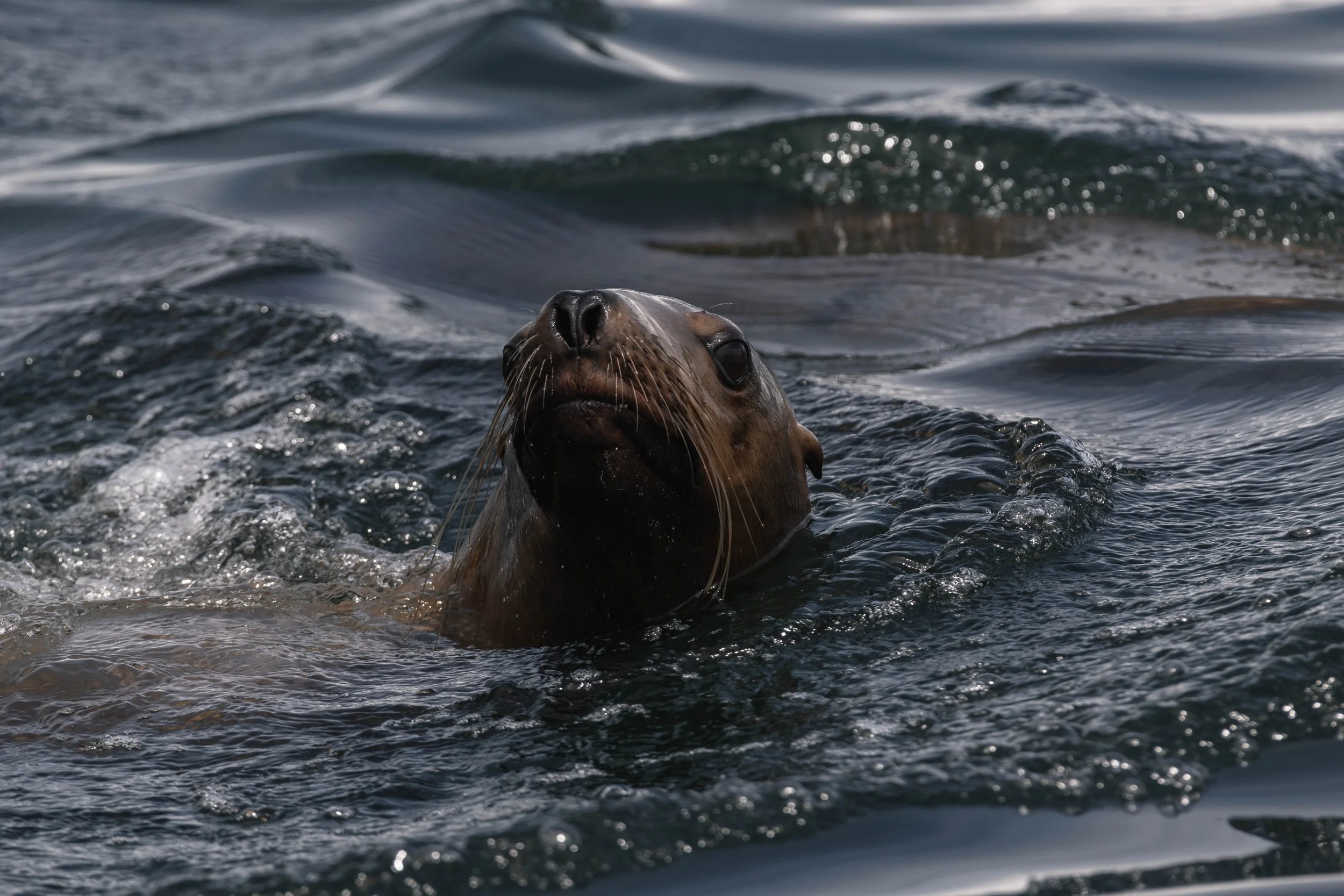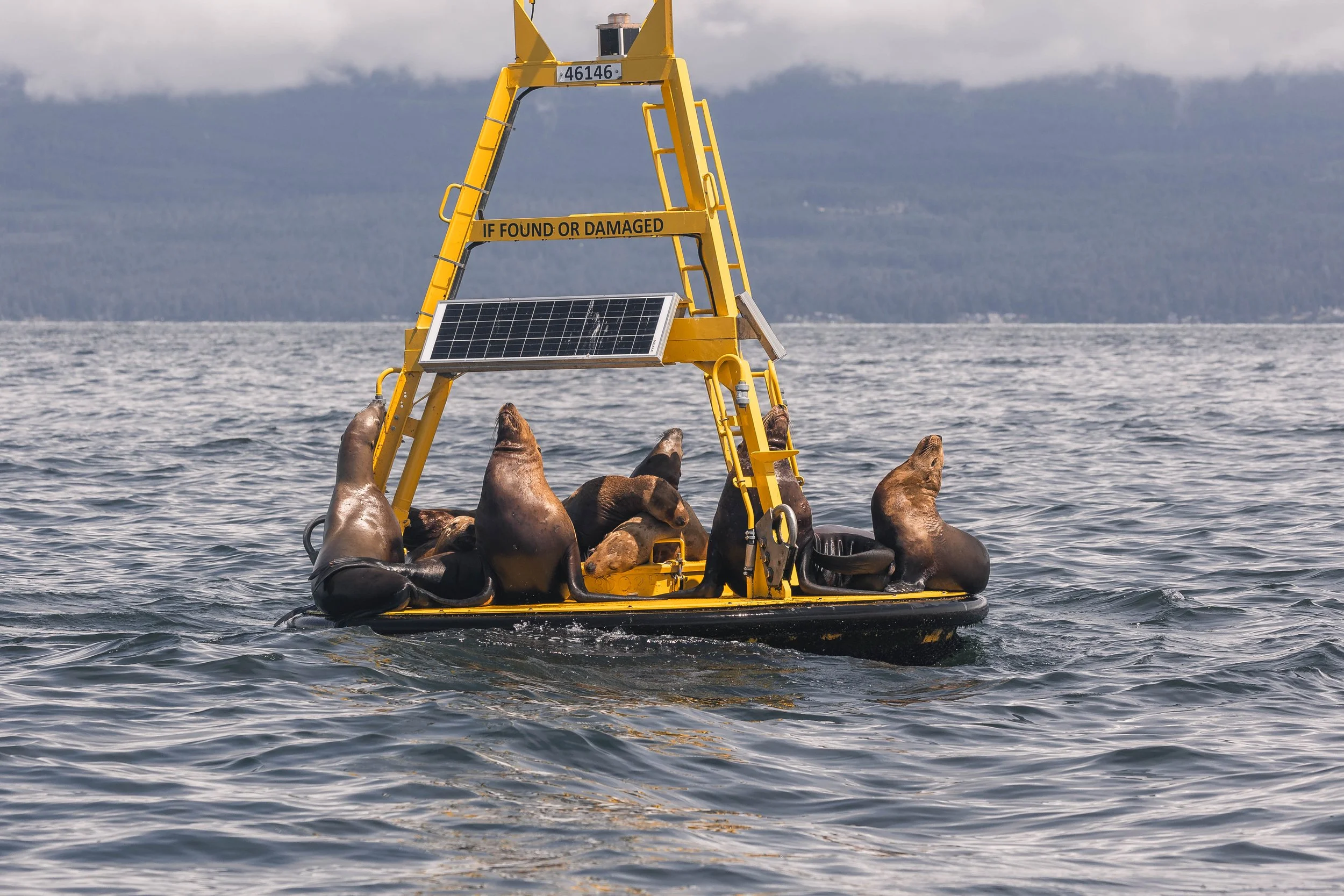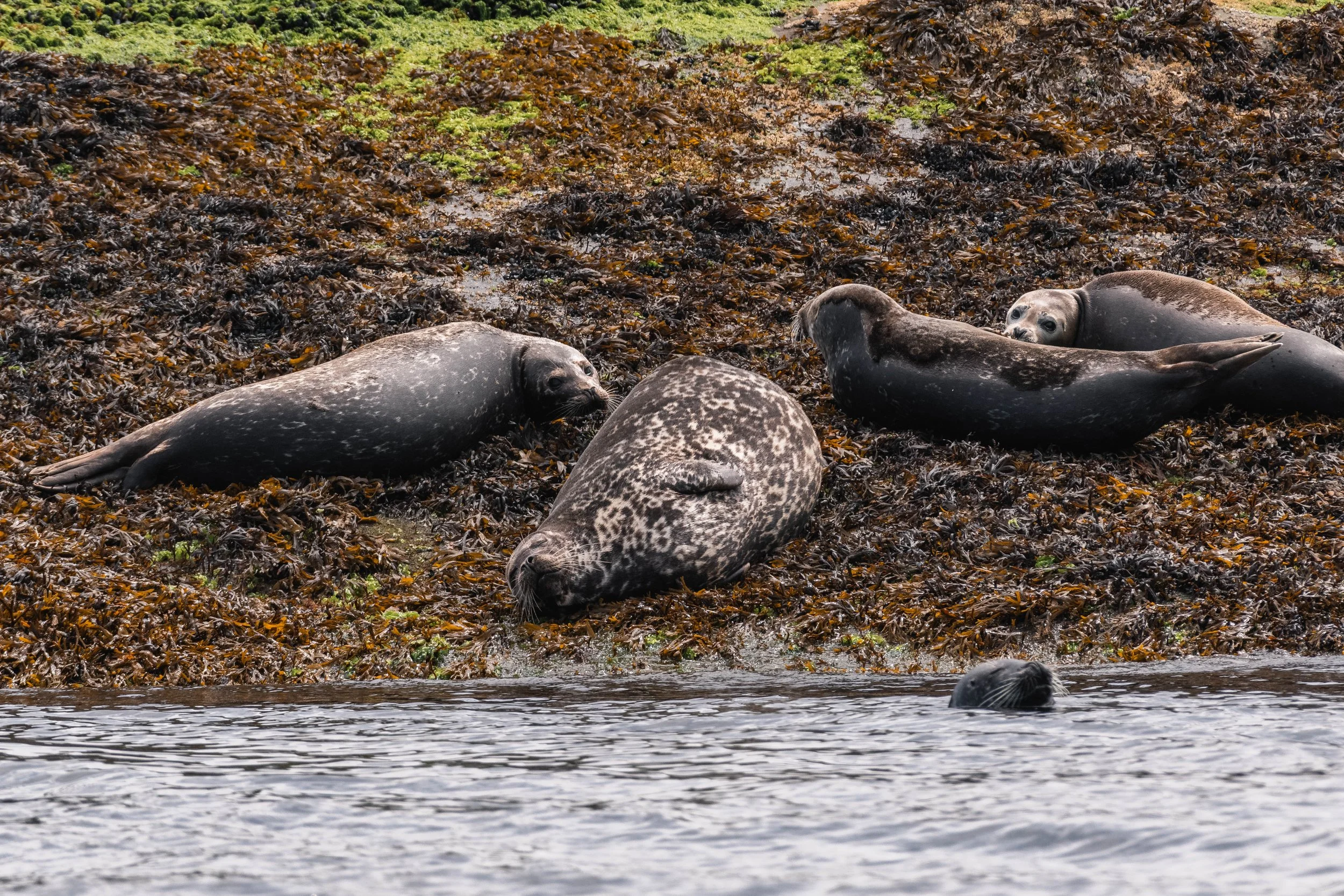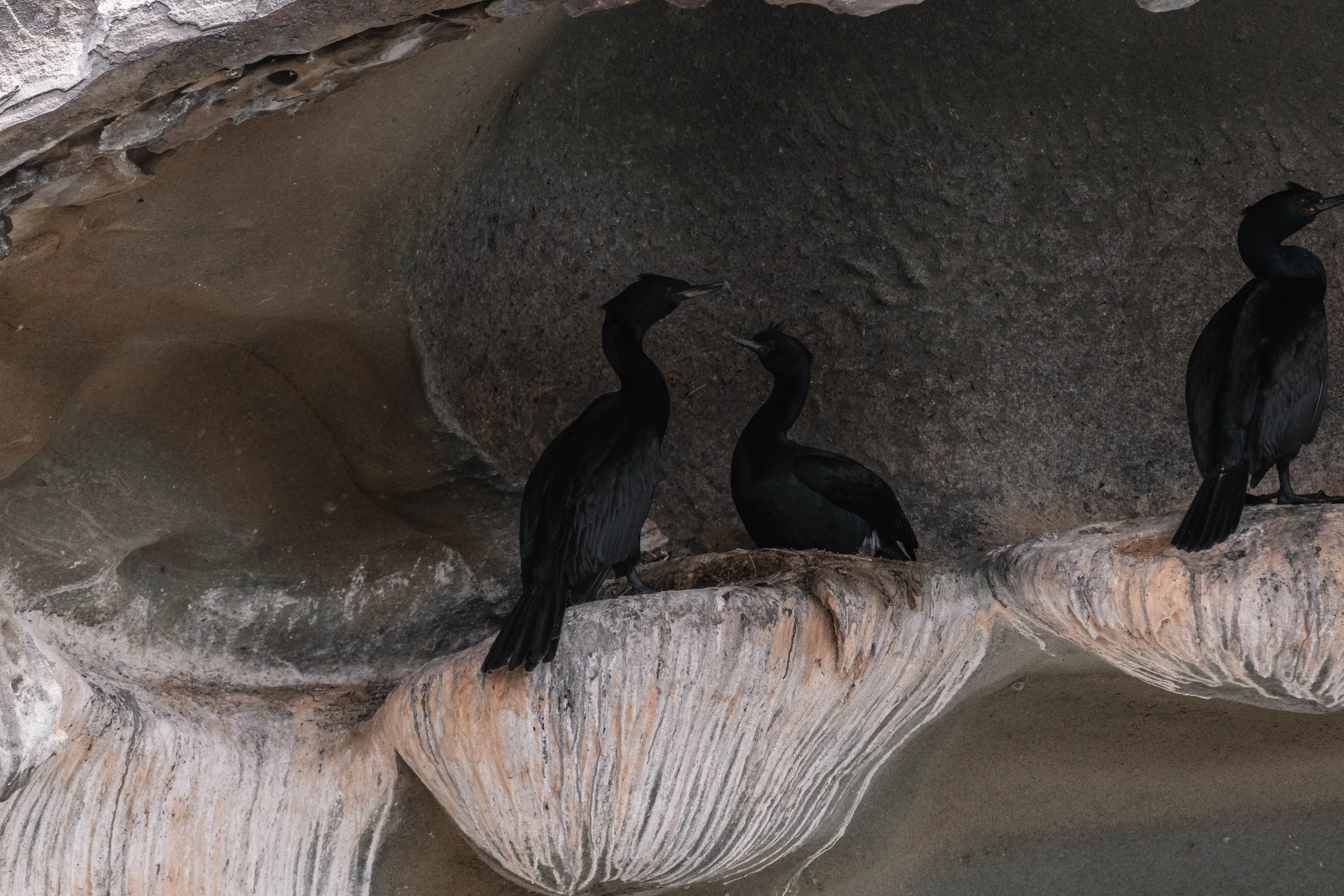July 9, 2025, 10:30 AM - Hungry Hungry Humpbacks at Halibut Bank
The sun greeted us from above as our two vessels pushed off the dock in Nanaimo, ready for another adventure. We motored into the Strait of Georgia, spreading out to maximize our chances of spotting wildlife. Our course was set for Halibut Bank, a well-known area of high productivity in the central Strait.
A "bank" is an underwater hill or mountain, and the change in depth forces nutrient-rich water to rise toward the surface. This vertical mixing of the water column is excellent for marine productivity. Cold, deep ocean water holds significantly more oxygen than warm surface water, and this oxygen is essential for supporting life. When that enriched water rises, it fuels the growth of primary producers like phytoplankton, microscopic organisms that use sunlight to grow. These phytoplankton support a whole food chain: larger plankton such as krill feed on them, and in turn, humpback whales feed on the krill. That’s why Halibut Bank is such a great place to search for whales—and why we were hopeful as we began our tour.
Sure enough, we soon spotted the distinctive, bushy blows of a humpback whale in the distance. Our first encounter was with Graphite (BCX2077), who appeared to be feeding in the area, no surprise given the productivity here. Humpbacks migrate to the Salish Sea during summer months to feed, after spending winters in the warmer breeding grounds of Hawaii or Mexico. While Graphite hasn't yet been definitively linked to either location, that could change as more data is shared between researchers. Graphite was easy to identify today, lifting his flukes high and revealing familiar white patches and notches. While his tail isn't heavily marked, his subtle features have become familiar to us over the years.
After some quality time with Graphite, we noticed another humpback in the distance and decided to investigate. It was Apollo (BCY0862), a known female who has just become a grandmother this year! Her daughter, Nova, recently had her first calf at age seven, right around the average age for humpbacks to begin having offspring. Some individuals may start as early as five, while others wait longer. Reproduction is an enormous energy investment; pregnant or lactating females need to consume about 1.5 times their usual intake, around 1.5 tonnes of food per day. Since their diet consists of small prey like krill and fish, this translates into a near-constant feeding effort. It's estimated that humpbacks spend 18–20 hours a day feeding during the summer months.
Following our encounter with Apollo, we made our way to the Halibut Bank ODAS buoy. Here, a group of young Steller Sea Lions could be seen hauled out, basking in the sun. Most mature sea lions migrate to breeding grounds during this time of year, but these younger animals typically remain behind. The buoy provides them a perfect haul-out site directly above a rich feeding area, just like the humpbacks; they are drawn here by the abundance of prey. While sea lions target fish like salmon, hake, and other small schooling species, their presence is a good indicator of overall ecosystem health. To regulate their body temperature, sea lions must spend up to half their day out of the water, and this buoy makes for a perfect resting spot between meals.
Our final stop brought us to the dramatic Gabriola Bluffs, where cormorants were busy flying in and out of their cliffside nests. These seabirds build their nests in cracks and crevices along the rock face, using guano to help cement the structures in place. Cormorants are remarkable divers, capable of plunging to depths of 120 feet in search of fish. To dive so efficiently, they lack the preening oil that most seabirds use to waterproof their feathers, giving them less buoyancy, but also making it necessary to dry out afterward. That's why you’ll often see them perched with their wings outstretched in harbours and on shorelines, drying off before returning to their nests.
Throughout the trip, our onboard marine naturalists, Aly Kohlman and Hayleigh Hilbert, captured some incredible photos of the day's encounters. You can view them all below!
Graphite lifting his tail for a dive. Photo by Aly Kohlman.
Graphite has some distinct scarring on their dorsal fin. Photo by Aly Kohlman.
Graphite creating a fluke waterfall as he dives. Photo by Aly Kohlman.
A great look at Graphite as he dives. Photo by Aly Kohlman.
Graphite going for a dive. Photo by Hayleigh Hilbert.
The underside of Graphite’s tail. Photo by Hayleigh Hilbert.
Graphite lifting his tail high for a dive. Photo by Hayleigh Hilbert.
A mini-fluke waterfall from Graphite as he dives. Photo by Hayleigh Hilbert.
Apollo surfacing with her nostrils showing. Photo by Aly Kohlman.
Apollo lifting her tail for a dive. Photo by Aly Kohlman.
The beautiul underside of Apollo’s tail. Photo by Aly Kohlman.
The underside of Apollo’s tail. Photo by Hayleigh Hilbert.
One of the Stellers Sea Lions striking a pose. Photo by Aly Kohlman.
A curious Sea Lion looking at us from the water. Photo by Aly Kohlman.
A cuddle Puddle happening on the buoy. Photo by Aly Kohlman.
Sea Lion colony on the ODAS Buoy. Photo by Hayleigh Hilbert.
A lone Harbour Seal at the Haul out. Photo by Aly Kohlman.
A very chubby Seal, perhaps a female ready to pup? Photo by Aly Kohlman.
A pup feeding from their mom. Photo by Aly Kohlman.
A Bald Eagle watching from overhead of the bluffs. Photo by Aly Kohlman.
Cormorants on te Gabriola Bluffs. Photo by Aly Kohlman.
Cormorants collecting nesting material. Photo by Aly Kohlman.
Beakfuls of material to bring back to the nest! Photo by Aly Kohlman.
A Bald Eagle perched near the Bluffs. Photo by Hayleigh Hilbert.
Cormorants with their wings streched out to dry. Photo by Hayleigh Hilbert.
Cormorants spending time on the Gabriola Bluffs. Photo by Hayleigh Hilbert.
A cormorant preparing to grab some nesting material. Photo by Hayleigh Hilbert.
Some colourful Sea Stars on the bluffs. Photo by Hayleigh Hilbert.

